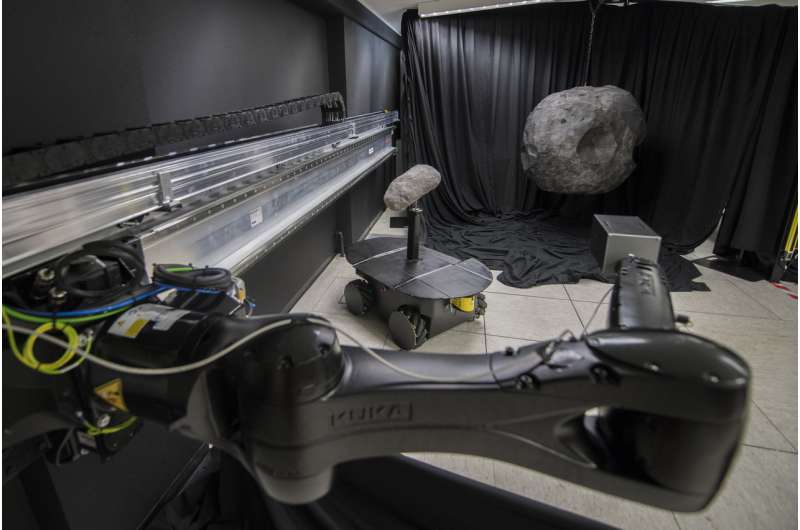Image: Model binary asteroids

The smaller model asteroid seen here atop a rover that slowly wheels around another larger model asteroid, a practical recreation of the kind of binary asteroid system to be visited by ESA's proposed Hera mission.
The camera seen to the right, mounted on a 33 m track, approaches this miniature binary asteroid system to test vision-based navigation software. Employing 3D printed asteroid models, this test took place in ESA's GNC Rendezvous, Approach and Landing Simulator, or GRALS.
"ESA's Hera mission, currently under study, would be humankind's first mission to a binary asteroid system, targeting the Didymos pair of Near-Earth asteroids," explains Paolo Martino, Hera system engineer.
"The plan is to map surface features of these bodies on an automated basis to pinpoint Hera's position in space and chart its onward trajectory. And GRALS is letting us test candidate navigation algorithms in a real-world way."
Part of the Agency's Orbital Robotics and Guidance, Navigation and Control Laboratory in its ESTEC technical centre in the Netherlands, GRALS is used to simulate close approach to uncooperative targets such as asteroids or drifting satellites.
Provided by European Space Agency





















